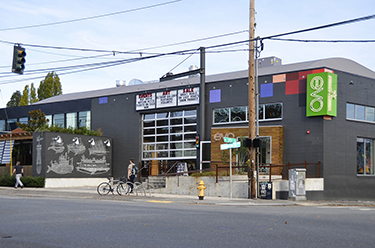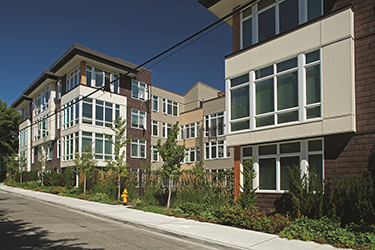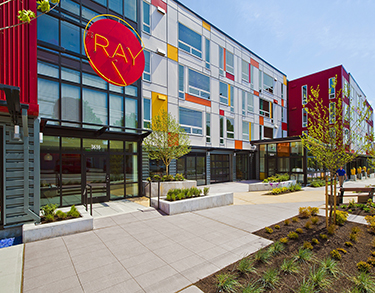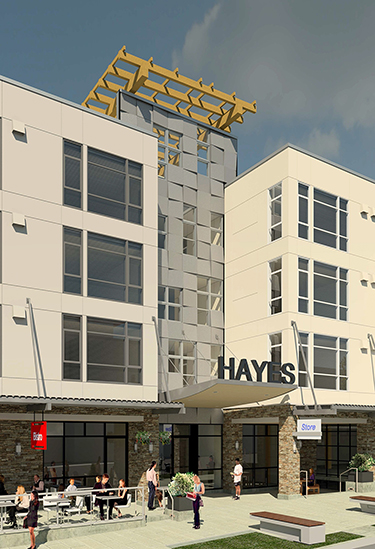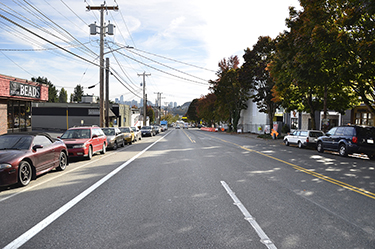|
Subscribe / Renew |
|
|
Contact Us |
|
| ► Subscribe to our Free Weekly Newsletter | |
| home | Welcome, sign in or click here to subscribe. | login |
Architecture & Engineering
| |
 |
October 29, 2015
What is Seattle's hot new neighborhood? LoSto
Baylis Architects

Frye
|

Everist
|
As Seattle’s appeal as one of the most livable cities in the U.S. continues to grow, formerly under-appreciated neighborhoods are emerging as new hot spots in a city already characterized by unique urban villages.
LoSto — the lower portion of Stone Way anchored by the dynamic new Brooks Sport headquarters at Stone 34 — is rapidly attracting new residents and businesses to a new center of activity between the iconic Fremont and historic Wallingford neighborhoods.
Location, location, location
LoSto sits in an enviable location. Bordered by Lake Union to the south, the dynamic 42,000-square-foot Fremont Lake Union Center to the west and North 40th and Bridge Way to the north, LoSto is linked by bike, bus, road and even kayak to the burgeoning tech industry hubs of Fremont and South Lake Union, as well as prominent institutions of higher learning including the University of Washington, Seattle Pacific University and Bastyr University.
“Contractors’ row” makeover
This stretch of Stone Way used to serve the homebuilding and contractor industry from a series of low-rise concrete block buildings that housed hardware, paint, lumber and plumbing supplies. Now much of this strip has been transformed by several exciting new apartment projects providing a variety of living spaces that in turn have generated an influx of new restaurants, activities and services.
Other independent businesses that evince the artistic, independent character of the surrounding neighborhoods continue to arrive, attracted by the increasing buzz and growth of nearby businesses like Tableau Software, Geocaching, Google, Adobe and Brooks Sports.
Embrace the new, respect the old
Stone Way forms a neighborhood spine, orienting the focus south towards Lake Union and downtown Seattle and concentrating the energy of a vibrant collection of new multifamily and commercial developments. Surrounding this spine is a ring of low-rise townhomes that dissipate the energy from the spine and transition the scale gently back to the craftsman style bungalows that characterize the original neighborhood.
A common theme among the new apartment and commercial projects is their sensitivity to the street-level scale, textures and amenity-rich environment. Each takes a different approach to achieving these goals, avoiding the homogenization trap too often witnessed when development happens so quickly.
Prescott Wallingford
In 2012 Prescott Wallingford at North 39th Street replaced an empty Safeway store with 154 apartments, a ground level bagel shop, live-work units and a gym. Conscious of its extra long exposure fronting Stone Way and the single-family residences to the east, the building design breaks the overall mass into smaller, identifiable segments to reduce impact and provide aesthetic interest.
Pollard Entities, the former building owner, notes the rents have climbed significantly since opening as the LoSto neighborhood gradually takes root.
Hayes
Further down Stone Way at 3627, Pollard Entities and Washington Holdings are building the Hayes, which will have 124 apartments and 7,500 square feet of retail. The sidewalk scene has patios, roll-up doors, covered outdoor seating and plazas to promote social interaction between customers and pedestrians. The building will exhibit a restrained, refined aesthetic that provides a background — or “edge” as developer Kevin Lynch would say — and allows the large street trees along its frontage to take center stage.
Ray
Across Stone Way at 3636 is Mack Urban’s Ray. This apartment has 119 units and 4,400 square feet of retail space. Its theme is light and bold colors, “anything but typical” according to the vision of Paul Keller, founding principal and CEO of Mack Urban.
“The artistic and independent boldness of Fremont was our design inspiration,” Keller said. “I love this neighborhood’s self-promotion as the Center of the Universe and asked the project team to put standard design notions aside.”
Ray’s rooftop amenity includes a fruit-filled orangery (greenhouse) and berry plants. Leases on the attractive retail spaces, anchored by an iconic light-filled pavilion, were quickly snapped up. Soon a pub and a yoga studio will further complement the string of new and popular spots along Stone Way and reinforce the pedestrian experience on the street.
Velo
Nearby at 3635 Woodland Park Ave. N., another Mack Urban apartment, Velo, provides 171 units catering to bicyclists. Close to the Burke-Gilman Trail, the building provides easy bike access and storage, as well as an onsite maintenance and repair space.
Extrovert versus introvert
While Ray boldly announces its presence on a busy arterial, Velo integrates subtly into the neighborhood. The Albion Place side of Velo consists of courtyards and bay windows that respect the look and feel of the adjacent residences.
These two projects recently sold to Greystar Real Estate Partners and set record sales prices for property north of the ship canal. Velo commanded $380,702 per unit and Ray $306,525 per unit (including its 4,400 square feet of commercial space).
This may well have been the result of research begun in 2011, before the market strength was fully foreseen. Mack Urban, Baylis Architects and Emi McKittrick developed target market profiles for both projects based on coffee-shop interviews as well as demographics and psychographics.
Strong growth coming
Cliff Chandler, managing director of investments for Greystar, said, “There is still some strong rental rate growth to come in the Fremont market. I would think that the rents in Fremont are anywhere from 10 percent to 20 percent less than what you see currently in the downtown and South Lake Union areas, and we believe this is a positive situation for the two properties that we bought going forward.”
The high per-unit values are good news for other close-in apartment buildings outside of downtown and South Lake Union, which may continue to see increases in value that could, in turn, easily manifest as more development in Ballard, the U District, Fremont and Wallingford.
Starting an evolution
At the heart of the LoSto neighborhood is the 25,000-square-foot Fremont Collective, a recent endeavor of Evolution Projects’ founder Bryce Phillips. He and his partner, Chad Dale, most recently redeveloped a building across the street housing the restaurant Manolin.
An excerpt from the company webpage says it all:
“The Fremont Collective is quickly changing Fremont/Wallingford Stone way corridor with a unique mix of businesses and top Seattle operators. Much like the Kolstrand Building, Evo and the Greenwood Collective, the Fremont Collective has flexible, indoor and outdoor engaging spaces that will work to anchor the community and take advantage of another great neighborhood. It is home to two amazing restaurants (Joule and The Whale Wins), as well as a flagship retail space for Evo and All Together Skatepark, Seattle’s only indoor skatepark.
The transformation
Seattle is indeed fortunate to have the kind of visionaries, entrepreneurs and big thinkers who can look at an underutilized, underdeveloped mini-neighborhood and catalyze its transformation into a distinctive, energetic magnet for life, work and play. There is much yet to look forward to as our city continues to grow and evolve.
Thomas Frye Jr., AIA, is a senior principal on multifamily projects at Baylis.
Meredith Everist, AIA, is a principal on multifamily projects at the firm.
Other Stories:
- Architects are the QB; meet the rest of the team
- Survey: Freiheit & Ho Architects
- Survey: Weber Thompson
- Survey: BCE Engineers
- Survey: NAC Architecture
- Survey: ESM Consulting Engineers
- Survey: Davido Consulting Group
- Survey: Studio 19 Architects
- Installing an AV system? Try your IT network
- Dramatic tax change is good for in-state A&E firms
- A closer look at Seattle’s new NBA/NHL arena
- Seattle Pacific University retro-commissions 25 buildings
- A step-by-step guide to selecting a virtual design partner
- Group polishes guidelines for design-build projects
- Survey: Karen Kiest Landscape Architects



